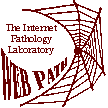CASE 4
(Click here to go to the answers)
A 38-year-old man has advanced AIDS. About a year ago, he presented with signs of HIV dementia and wasting syndrome, and his CD4 count was <50. He has been routinely evaluated since the initial diagnosis. Eosinophilic folliculitis and Candida stomatitits are his only documented opportunistic infections. His regular medications include AZT (zidovudine), D4T (stavudine), indinavir (protease inhibitor), itraconazole (folliculitis treatment, Candida prophylaxis), acyclovir (HSV prophylaxis), monthly pentamidine (for Pneumocystis carinii (jirovecii) prophylaxis), marinol (treatment of HIV wasting), and pepcid (for peptic ulcer disease).
Two months ago, the patient underwent a tooth extraction (an infected mandibular molar), seemingly without incident. Two weeks ago, he experienced a sore throat, sinus congestion, and cough. He was seen at his usual clinic and treated with a 10-day course of Cefuroxime, after which his symptoms improved. However, two days ago, he returned to the clinic complaining of neck stiffness, headache, sore throat, and decreased appetite. He was tested for meningitis, but the results were negative and he was discharged home. His CD4 count was 200, with HIV-1 RNA level of <50 copies/mL.
Now the patient has returned again, complaining of a worsening sore throat, odynophagia, trouble swallowing his oral secretions, difficulty in breathing, decreased appetite, and a noticeable fever that has persisted for the past two days. On examination, the man is in significant distress, sitting upright, drooling, with some use of accessory muscles of respiration. The man can only give garbled, one-word answers to questions because of swelling and upward/posterior displacement of his tongue. Vital signs are T = 39 C, R = 100, P = 24, BP = 130/80 mm Hg. Tender, bilateral submandibular swelling (greater on the right than on the left) is evident. Fluctuance is insignificant. Sublingual swelling is indicated by upward displacement of the tongue. No cervical, supraclavicular, infraclavicular, pre/posterior auricular, or axillary lymphadenopathy is detected. Examination of the oropharynx is hindered by marked trismus of 25 mm. The right tonsil has a yellow-white exudate and is erythematous, but the left tonsil is clear. A large area (3 x 3 cm) of the right soft palate is swollen.
The patient is now evaluated by the Otolaryngology team because of the potential for rapid compromise of his airway and the need for better visualization of the pharynx. The team members note normal vocal cords, a fully patent airway, right arytenoid fold swelling, and slight fullness of the right pharyngeal wall. There are no signs of supraglottitis or epiglottitis. A CT scan of the neck and sinuses indicates significant bilateral peripharyngeal, retropharyngeal, and paravertebral space soft tissue inflammatory change with edema. Right sided spaces are more involved than left. Swelling distorts and compresses the oropharynx. The left common and external jugular veins are thrombosed. Finally, there is evidence of chronic sinusitis.
Question 4.1: What is your preliminary diagnosis?
Question 4.2: How did this infection start and develop?
Question 4.3: Were there any predisposing factors?
Question 4.4: What are causative agents?
Question 4.5: How is this disease treated?
|
 Return to the
Microbiology Menu.
Return to the
Microbiology Menu.
 Return to the
Microbiology Menu.
Return to the
Microbiology Menu.